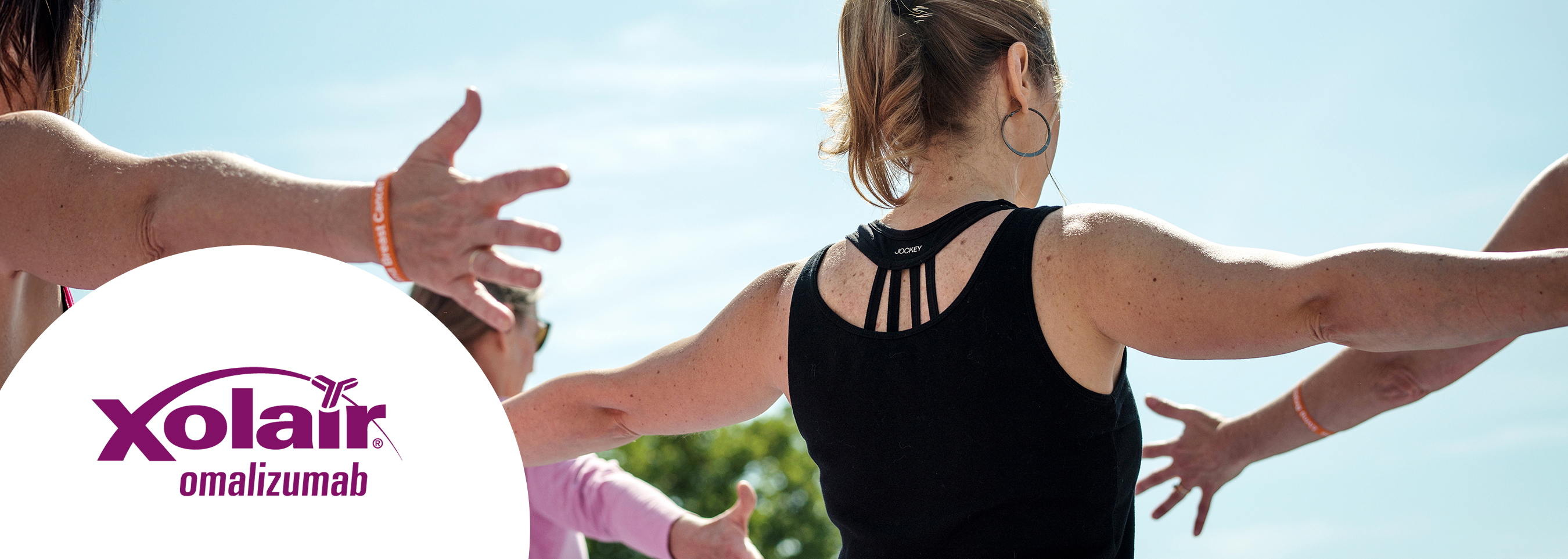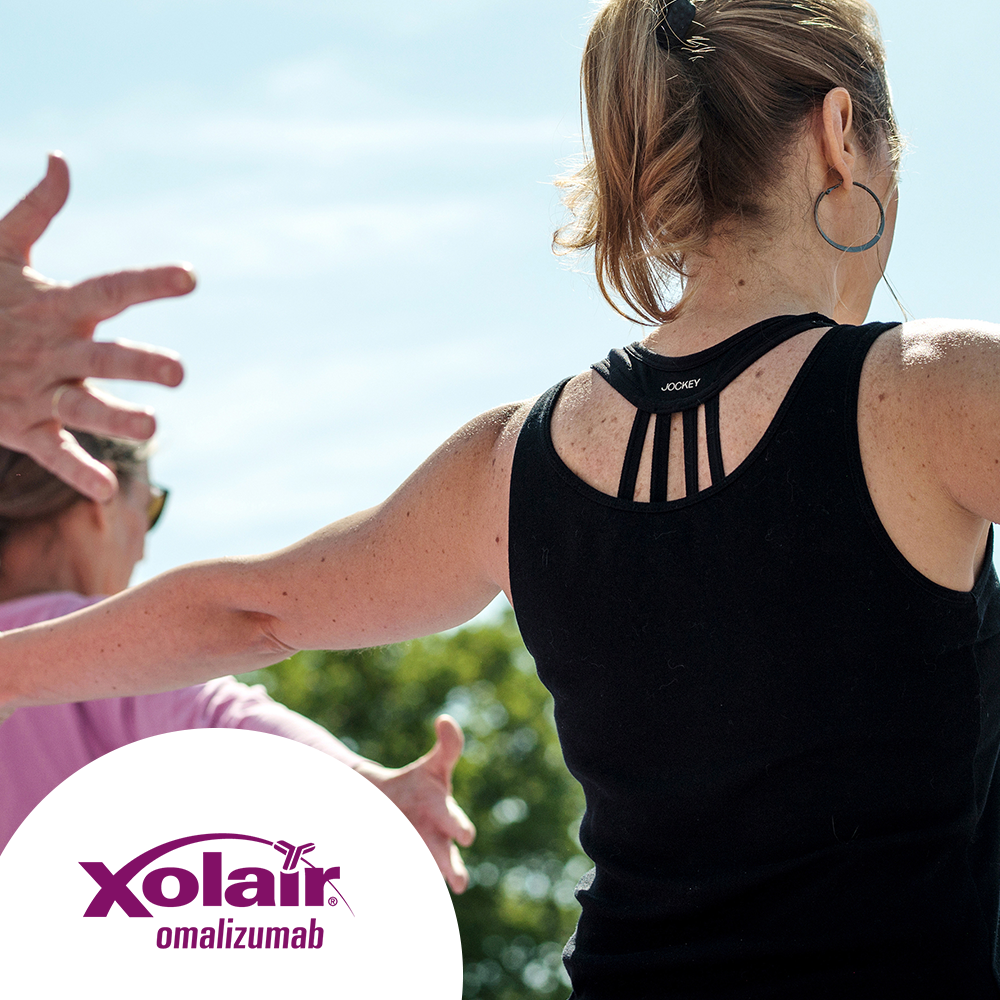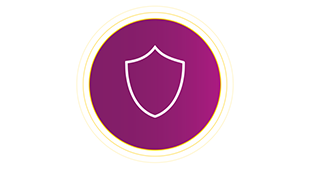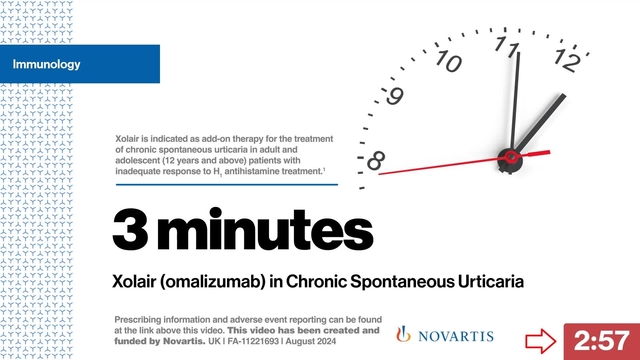

Xolair® (omalizumab)
Indications:1
Xolair is indicated as add-on therapy for the treatment of chronic spontaneous urticaria (CSU) in adult and adolescent (12 years and above) patients with inadequate response to H1 antihistamine treatment.
The recommended dose of Xolair in patients with chronic spontaneous urticaria is 300 mg by subcutaneous injection every four weeks.1
For the full therapeutic indication of Xolair and for further safety profile information, please refer to the Summary of Product Characteristics (SmPC), here.
In patients with CSU, the most common adverse reactions that occurred during treatment with Xolair were sinusitis (4.9%), headache (6.1%), arthralgia (2.9%), injection site reaction (2.7%) and upper respiratory tract infections (5.7%). Please see the SmPC for the full safety profile information.
Click here for more information on the safety profile of Xolair.

Efficacy and symptom control vs placebo*
82% of patients (n=252) had an MID in UAS7 (reduction from baseline of ≥11 points) at 12 weeks vs 59% with placebo (n=83), p<0.0001 (exploratory endpoint). Mean UAS7 at baseline was 31.2 for Xolair and 30.2 for placebo2
34% of patients (n=252) were itch and hive-free at 12 weeks vs 5% placebo (n=82, p<0.001)†3

Reduction in DLQI score from baseline observed vs placebo as early as week 12†
73% reduction in DLQI from baseline at 12 weeks (n=216), vs 23% with placebo (n=64, p<0.001, post-hoc analysis). Mean DLQI at baseline was 13.8 for Xolair and 13.0 for placebo (for the modified intent-to-treat population)‡4

Think an established safety profile
>1.3 million patient-years of market experience across CSU and other indications5,6
Xolair
Is the only licensed BAD-recommended treatment option for CSU after first-line antihistamines7
BAD guidelines recommend Xolair as a second-line treatment option for CSU, in addition to a second-generation H1-antihistamine
Requires simple dosing of 300 mg every 4 weeks1
Prescribers are advised to periodically reassess the need for continued therapy1
Directly targets and binds to IgE,1,8,9 impeding the IgE allergic pathway, and rendering mast cells and basophils insensitive to activation through IgE/ FcεRI8,9
Watch our short video to improve your understanding of Xolair
*Data from the GLACIAL study – a global, multicentre, randomised, double-blind, placebo-controlled study investigating Xolair in CSU patients aged 12–75 years whose signs and symptoms persisted despite treatment with H1-AH at up to 4× the approved dose ± H2-AH ± LTRAs for >6 consecutive weeks (Novartis does not condone the off-label use of any medicine. Please refer to the individual product Summary of Product Characteristics before prescribing). The primary objective of the study was to evaluate the overall safety of Xolair (n=252) compared with placebo (n=84). Efficacy was also evaluated at Week 12.2–4
†Secondary endpoint, UAS7=0.
‡Additional efficacy endpoint. Absolute reduction of −9.7 (vs 5.1 placebo) in mean DLQI (observed data, p<0.0001).3,4
BAD, British Association of Dermatologists; CSU, chronic spontaneous urticaria; DLQI, dermatology life quality index; H1-AH, H1-antihistamine; H2-AH, H2-antihistamine; IgE, immunoglobulin E; LTRA, leukotriene receptor antagonist; MID, minimal important difference; SmPC, summary of product characteristics; UAS7, urticaria activity score (seven days).
References
Xolair® (omalizumab) Summary of Product Characteristics.
Novartis Data on File. XSU15-R002. Proportion of UAS7 MID responders at Week 12 – GLACIAL study.
Kaplan A, et al. J Allergy Clin Immunol 2013;132(1):101–109.
Casale TB, et al. J Allergy Clin Immunol Pract 2015;3(5):743–750.e1.
Novartis Data on File. Periodic Safety Update Report (PSUR) 2019.
Bousquet J, et al. J Allergy Clin Immunol Pract 2021;9(7):2702–2714.
Sabroe RA, et al. Br J Dermatol 2022;186(3):398–413.
Chang TW, et al. J Allergy Clin Immunol 2015;135(2):337–342.
Kaplan AP, et al. Allergy 2017;72(4):519–533.
UK | May 2025 | FA-11222278
Adverse events should be reported. Reporting forms and information can be found at www.mhra.gov.uk/yellowcard. Adverse events should also be reported to Novartis online through the pharmacovigilance intake (PVI) tool at www.novartis.com/report, or alternatively email [email protected] or call 01276 698370.

